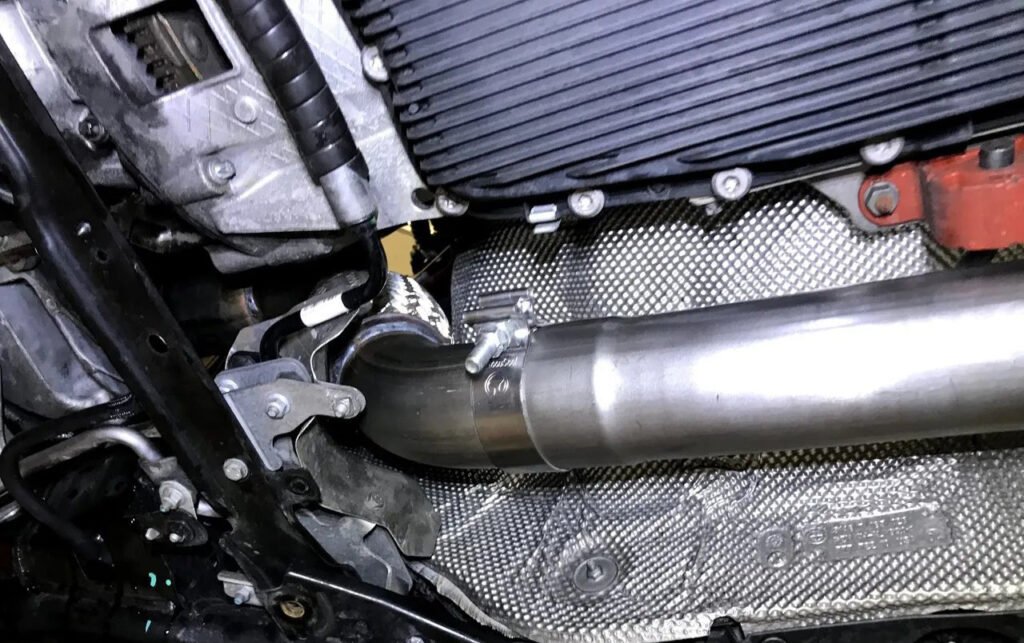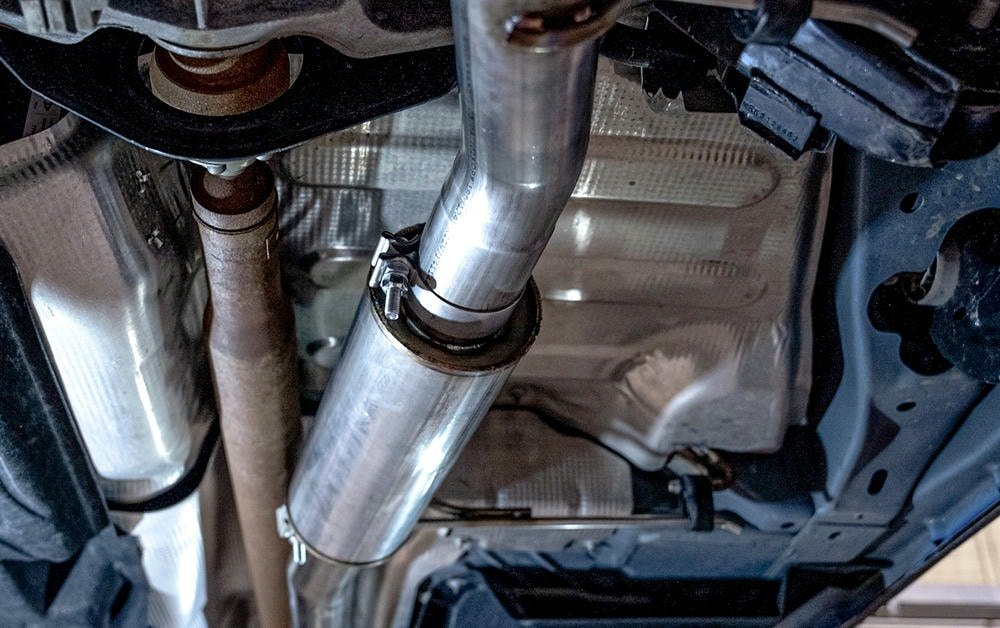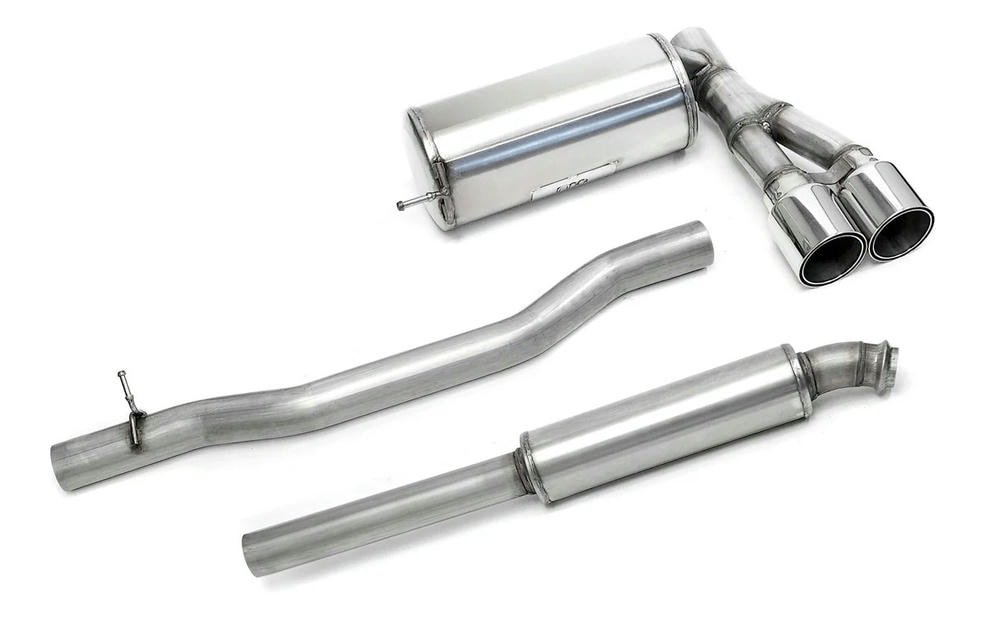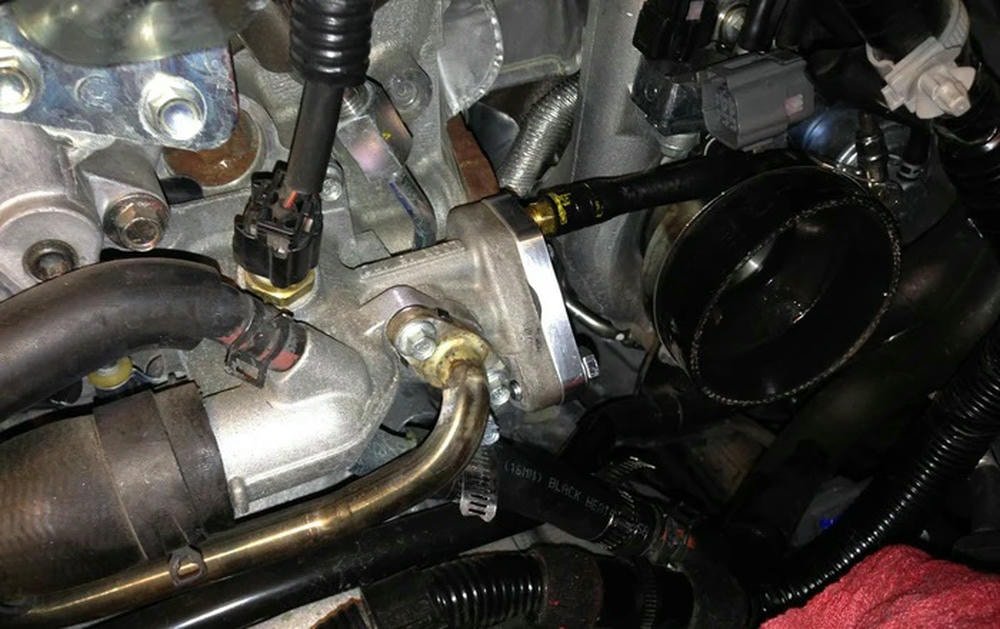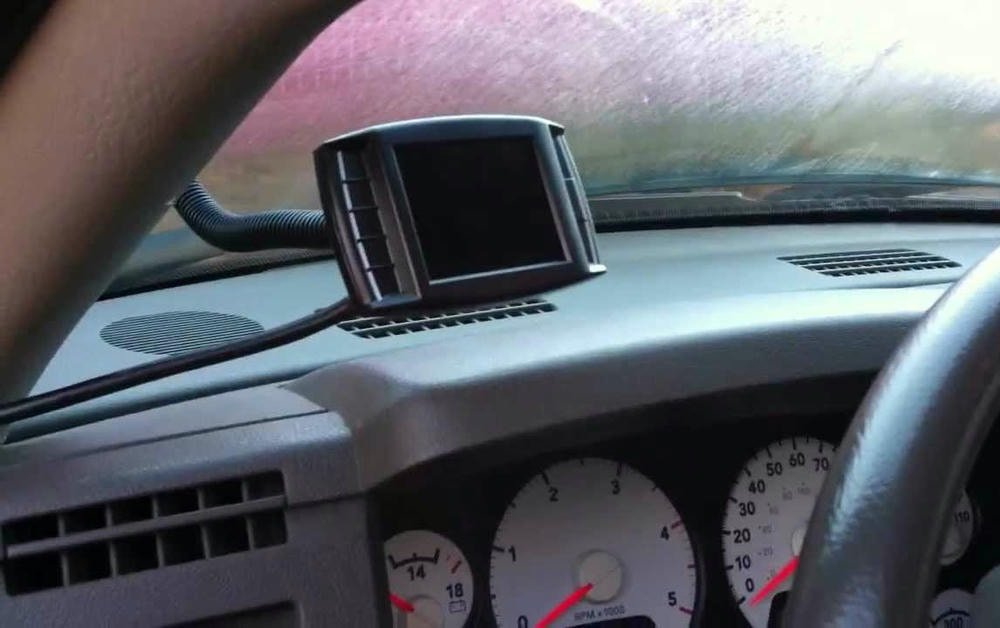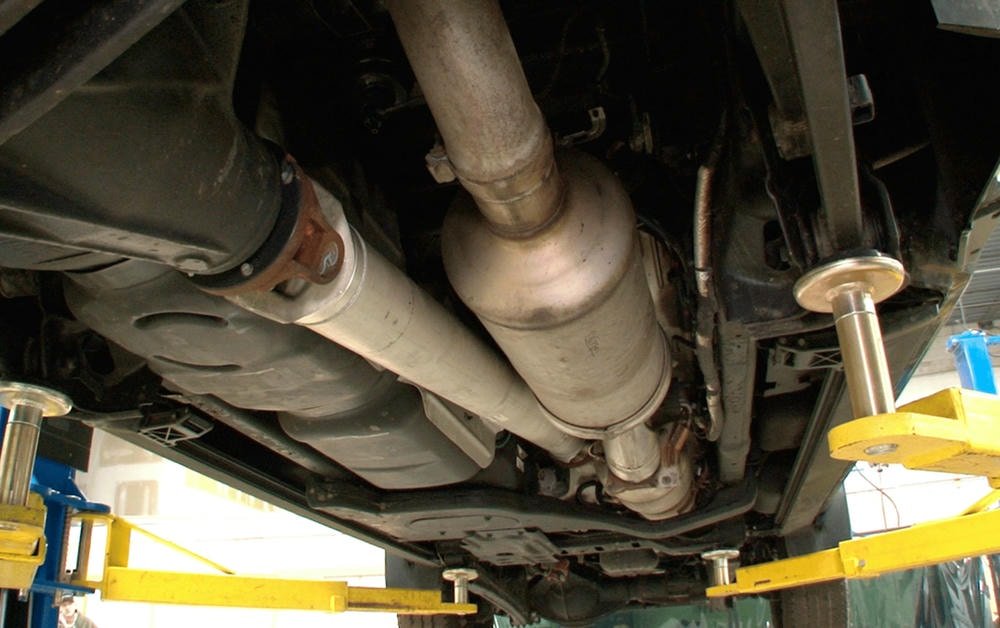Installing cat and DPF delete race pipes is all about boosting a diesel truck’s performance. This process lets exhaust gases flow better, which might also help with fuel use. To make this upgrade work right, one needs the correct tools and to follow safety steps closely.
It’s crucial for truck owners to know how to remove the old catalytic converter and Diesel Particulate Filter (DPF) before putting in new delete pipes.
Next, making sure everything fits well together without leaks is key for good results. After the install, checking for any leaks and testing how well the truck runs are must-dos. Despite these benefits, it’s good to keep in mind that these changes can affect whether a vehicle meets emission rules.
With useful advice and clear steps, this article guides diesel truck enthusiasts through each part of installing cat & DPF delete race pipes. Get ready to learn how!
Índice
TogglePreparation for Installation
Getting your tools and safety gear ready is the first big step in installing cat & DPF delete pipes on your diesel truck. Make sure you have wrenches, screwdrivers, a jack to lift the vehicle, and protective gloves and goggles before starting.
Herramientas y equipos necesarios
Getting ready to install cat and DPF delete pipes is a big task. Diesel truck owners need the right tools and know-how. Here’s a list of what they need:
- Socket set: This includes various socket sizes to remove bolts and nuts.
- Wrench set: Needed for those hard-to-reach places where a socket won’t fit.
- Screwdrivers: Both flat-head and Phillips types will be useful.
- Torque wrench: Ensures bolts are tightened to specific standards.
- Jack stands: Safety first—these keep the truck lifted safely during work.
- Floor jack: Used to lift the truck and place it on the jack stands.
- OBD-II scanner: Checks for any diagnostic trouble codes after installation.
- Penetrating oil: Helps loosen rusty or stuck bolts and nuts.
- Gloves: Protects hands from sharp edges and hot surfaces.
- Safety glasses: Keeps eyes safe from debris.
A diesel truck owner shared that having these tools made their DIY delete pipe installation smoother than expected. They also stressed checking exhaust flow and engine performance with an OBD-II scanner post-installation was crucial for catching issues early on.
Safety Precautions
Installing cat and DPF delete pipes requires careful handling. Diesel truck owners must follow safety steps to avoid injuries.
- Wear eye protection: Tiny particles can fly off while working.
- Use gloves: They protect hands from sharp edges of exhaust systems.
- Disconnect the battery: This prevents accidental starts or electrical shocks.
- Cool down the engine: Working on a hot engine can burn skin.
- Jack up the truck safely: Use jack stands to prevent the truck from falling.
- Keep a fire extinguisher nearby: It’s vital in case a fire starts in the work area.
- Ventilate the area well: Exhaust fumes are harmful if breathed in for too long.
- Do not rush: Take your time to avoid mistakes that could lead to injury.
- Check all tools before starting: Broken tools can cause accidents.
- Follow instructions carefully: Understanding each step reduces risks.
These precautions help ensure a safe installation process for delete race pipe setups on diesel vehicles like Chevrolet Silverado 2500 HD or GMC Sierra 2500HD, improving exhaust flow and possibly fuel mileage without unexpected issues.
Vehicle Setup and Pre-installation Checklist
Getting your diesel truck ready for cat & DPF delete pipe installation is crucial. You need the right tools and a safe setup. Here’s what to do before starting:
- Aparque su camión en un level surface. This makes it safer to work under.
- Utilice wheel chocks behind the wheels. They stop the truck from rolling.
- Gather all necessary tools. You’ll need wrenches, screwdrivers, and a socket set.
- Disconnect the battery. This prevents any electrical issues.
- Lift the truck with jack stands or a hydraulic lift for better access underneath.
- Wear equipo de seguridad like gloves and glasses to protect yourself.
- Check for rust or damage on existing exhaust parts that could affect installation.
- Have a fire extinguisher nearby in case of emergencies.
- Make sure you have enough light to see clearly under the truck.
Doing these steps helps avoid problems during your delete pipe project.
Proceso de instalación paso a paso
Installing cat and DPF delete pipes involves precise steps to enhance your truck’s performance. First, you’ll take out the catalytic converter and diesel particulate filter, then fit the new pipes carefully.
This boosts exhaust flow, linking with tasks like tuning engines or adding turbochargers for more power. Tools like wrenches and clamps come in handy here. Each step ensures a snug fit to avoid leaks, optimizing your diesel motor’s power and efficiency.
Removing the Catalytic Converter and DPF
Extracción del catalytic converter and DPF from a diesel truck requires careful steps. This process helps improve flujo de escape and can boost performance.
- Park the truck on a level surface. Turn off the engine and wait for it to cool down.
- Gather your tools. You will need wrenches, sockets, a ratchet, and safety gear like gloves and eye protection.
- Locate the catalytic converter and DPF under the truck. They are part of the sistema de escape.
- Disconnect any sensors attached to these parts. Handle them carefully to avoid damage.
- Use your wrench to loosen the bolts or clamps holding the catalytic converter in place.
- Gently remove the catalytic converter from its position.
- Follow similar steps to detach the DPF from its mount.
- Check all connections for wear or damage before proceeding further.
These steps prepare your diesel truck for installing delete race pipes, leading to a custom exhaust setup that boosts engine performance and enhances exhaust flow optimization. Always ensure everything is securely fastened and double-check your work at each step to avoid issues later on.
Installing the Delete Pipes
Installing delete pipes on a diesel truck means taking out the old exhaust parts and putting in new ones. This boosts the truck’s power and can help with fuel use. Here’s how to do it:
- Lift the truck using a jack and secure it on stands. Make sure it is stable.
- Unbolt the catalytic converter (cat) and diesel particulate filter (DPF) from their spots under the truck. These are big parts of the sistema de escape.
- Take these parts out carefully. They might be heavy, so get help if needed.
- Check the new delete pipes for any damage or missing parts before installing them.
- Place the delete pipes where the cat and DPF were removed. Line them up right so they fit well.
- Utilice new gaskets to make sure there are no leaks between connections.
- Bolt the delete pipes into place, following any included instructions closely.
- Tighten all connections well, but don’t overdo it and strip the threads.
- Hook up any sensors that were connected to the old sistema de escape onto the new delete pipes.
A person who does this themselves might find that their truck runs better afterward. They might notice more power right away and better miles per gallon over time.
Always check for leaks after installing new parts like this, especially at all joint areas.
If something doesn’t seem right after installation, such as strange noises or warning lights on the dash, recheck your work to make sure everything is tight and in its proper place.
Putting in delete pipes isn’t too hard if you have basic mechanic skills. Plus, doing it yourself can save money compared to paying a shop to do it.
Doing this also means understanding local laws about emissions controls because in some places, making these changes might not be allowed on roads or might need special permissions.
In short, installing delete pipes is a straightforward way to improve a diesel truck’s performance when done correctly and legally.
Securing Connections and Clamps
Securing connections and clamps is a crucial step in delete race pipe installation. Diesel truck owners need to ensure everything fits tightly to avoid leaks that can hurt performance.
- Gather all your tools. You will need a ratchet set, torque wrench, and screwdrivers.
- Check every connection point. Make sure the delete pipes align with the sistema de escape.
- Use the right size clamps. They must match the diameter of your pipes for a secure fit.
- Tighten each clamp evenly. Turn them until they are snug, but do not over-tighten as this can damage the pipe.
- Double-check the torque specifications for your vehicle’s clamps in the service manual.
- Inspect rubber mounts for wear and tear. Replace them if needed to support the new setup firmly.
- Test each connection by gently pulling on the pipes and clamps to make sure they hold tight.
- Start the engine and listen for any unusual noises that could signal a leak.
- If you find a leak, tighten the connections further or re-align parts as necessary.
A diesel truck owner shared their experience: After installing their own delete race pipes, they found one loose clamp during testing. They tightened it as per steps 3 and 4, eliminating an annoying exhaust leak.
Following these steps ensures a solid installation free from leaks that could affect exhaust flow and rendimiento del motor negatively.
Final Adjustments and Testing
After installing delete pipes, the final steps ensure everything works right. Diesel truck owners need to ensure their new exhaust setup runs smoothly. Here’s how to do final adjustments and testing:
- Check all connections are tight. After fitting the cat & DPF delete pipes, tighten all clamps and bolts.
- Look for leaks. Start the engine and listen closely for hissing sounds that indicate air escaping.
- Test exhaust flow. Feel around the pipe connections with your hand to make sure air flows strongly without any blockage.
- Monitor engine performance. Drive your truck and pay attention to how it runs. It should feel more powerful.
- Use a scan tool to check for codes. Connect a diagnostic scanner to see if the engine throws any error codes after the mods.
- Inspect for carbon buildup around connections over time to prevent future issues.
- Confirm EGR system function, if applicable, is not negatively impacted by the new exhaust setup.
- Evaluate turbocharger response, especially in diesel trucks with power stroke engines, for increased efficiency or any abnormal noises.
- Note changes in eficiencia de combustible during test drives, as delete pipes often improve this due to reduced back pressure.
- Share experiences and seek advice from online forums or local communities about escape de alto rendimiento fitting challenges you faced and how you solved them.
These steps help diesel truck owners enjoy their custom exhaust setups while maintaining good vehicle health.
Post-Installation Considerations
After putting in the new exhaust parts, it’s wise to check for leaks and make sure everything fits right. Testing how well your diesel truck runs with the updated system can help catch any problems early.
Comprobación de fugas
After installing delete race pipes on a diesel truck, comprobación de fugas is a must. Start the engine and let it run for a few minutes. This gives enough time for the sistema de escape to pressurize.
Listen closely near the connections between the delete pipes and the rest of the sistema de escape. Hissing sounds can signal a leak.
Utilice soapy water around these connections too. Bubbles form where there are leaks. This method is simple but effective in finding even small leaks that might not make noise yet cause issues later on.
Make sure every connection is tight and secure before wrapping up this step. Fixing any leaks now saves trouble and ensures better performance from your diesel truck’s new setup.
Testing Exhaust Flow and Engine Performance
To test exhaust flow and engine performance after installing delete race pipes on a diesel truck, owners use a flow meter and a diagnostic scanner. They connect the flow meter to the tailpipe to measure how smoothly exhaust gas exits.
This step checks if the new setup improves air movement out of the engine, crucial for better performance. The diagnostic scanner plugs into the truck’s onboard diagnostics port. It reads any codes that could point out problems with emission control or exhaust gas recirculation systems.
Owners also keep an eye on turbocharger behavior because it plays a big role in how well their trucks run with these modifications. A smoother turbo response often means the install went well and is boosting efficiency as intended.
During this phase, they pay close attention to power stroke diesel engines or duramax models for specific adjustments in tuning devices or EGR systems that might need tweaks to match the new exhaust setup perfectly.
Addressing Any Installation Issues
After installing delete race pipes, diesel truck owners might face a few hiccups. If there’s a leak or the engine isn’t running smoothly, it’s crucial to tackle these problems quickly.
Start by checking all clamps and connections. Make sure they’re tight and secure. Sometimes, the issue comes from something simple like a loose clamp around the tail pipe or near the turbocharger.
Owners should listen for odd sounds or look for signs of exhaust escaping where it shouldn’t. A handheld tuner is a handy tool here. It can help diagnose issues by reading the truck’s computer codes.
This approach has helped many in catching small problems before they turn big.
Una puntada a tiempo salva nueve.
This old saying holds true, especially when tweaking your vehicle’s exhaust system with mods like cat & DPF delete pipes. Taking action early on any installation mishap can prevent long drives filled with worry about potential damage to your powerstroke diesel engine.
Conclusión
Experts agree fitting race pipes is a smart move for engine tuning. One such expert, Jamie Smith, comes with a rich background in automotive engineering. With decades spent tweaking engines and an impressive list of patents in exhaust technology, Smith knows his stuff.
Smith looks closely at delete pipe installation. He notes the process boosts engine breathability and power. It does so by removing airflow blocks. The science? More air means better combustion.
Safety and ethics can’t be ignored. Smith points out that while these mods improve performance, they must comply with laws and emissions standards. Honesty about the changes to your vehicle is key.
For daily use or specific needs, Smith recommends moderation. Not all vehicles benefit equally from such intense mods.
He weighs pros against cons carefully. Yes, there are gains in power and efficiency. But potential legal issues or warranty voids? Real concerns.
His final take: If you know what you’re doing and stay informed on regulations, these pipes offer great value for diesel truck owners looking to up their game.
Preguntas frecuentes
1. What is the step-by-step process for installing Cat & DPF delete race pipes?
The installation of Cat & DPF delete race pipes involves a specific sequence of steps, starting with engine tuning and ending with turbocharger integration into the exhaust system. It’s crucial to follow a reliable delete pipe installation guide for this DIY exhaust modification.
2. How do I fit cat & DPF delete pipes into my Corvette Stingray?
Fitting cat & DPF delete pipes on your Corvette Stingray requires careful attention to detail and familiarity with the vehicle’s sistema de escape setup. You’ll need to follow an exhaustive step-by-step delete pipe installation guide tailored specifically for your car model.
3. Can tuners help me in setting up my DIY exhaust mods?
Yes, tuners play an essential role in successful DIY exhaust modifications like installing Cat & DPF Delete Race Pipes. They assist in fine-tuning the engine performance after the new components have been integrated into your vehicle’s existing system.
4. Is there any risk involved when integrating turbochargers after installing a cat and DPF Delete Race Pipe?
While integrating turbochargers can enhance performance after you’ve installed a cat and DPF Delete Race Pipe, it must be done correctly to avoid damage or reduced efficiency in your vehicle’s operation. Always refer back to qualified guides or seek professional advice if uncertain.

